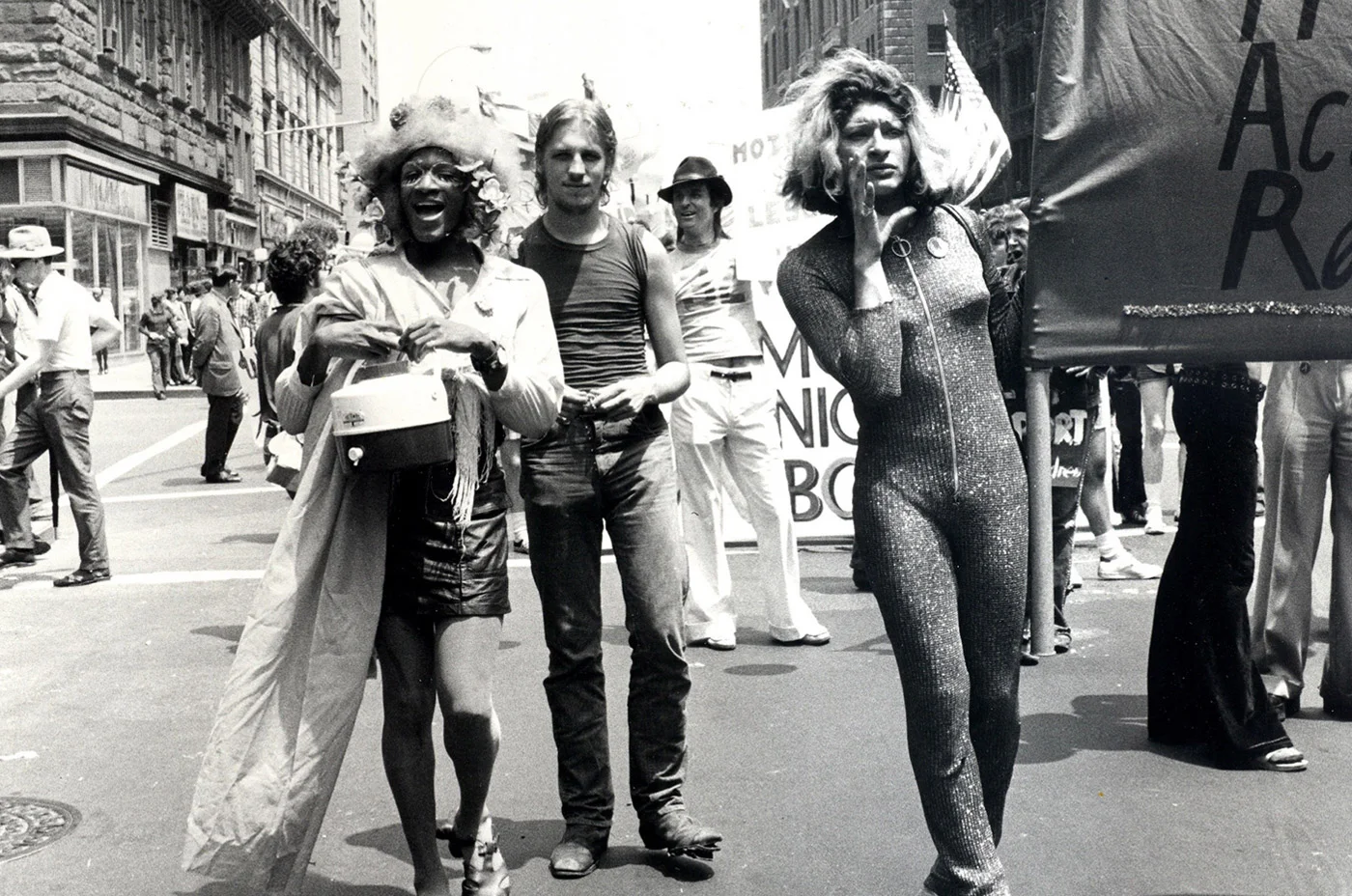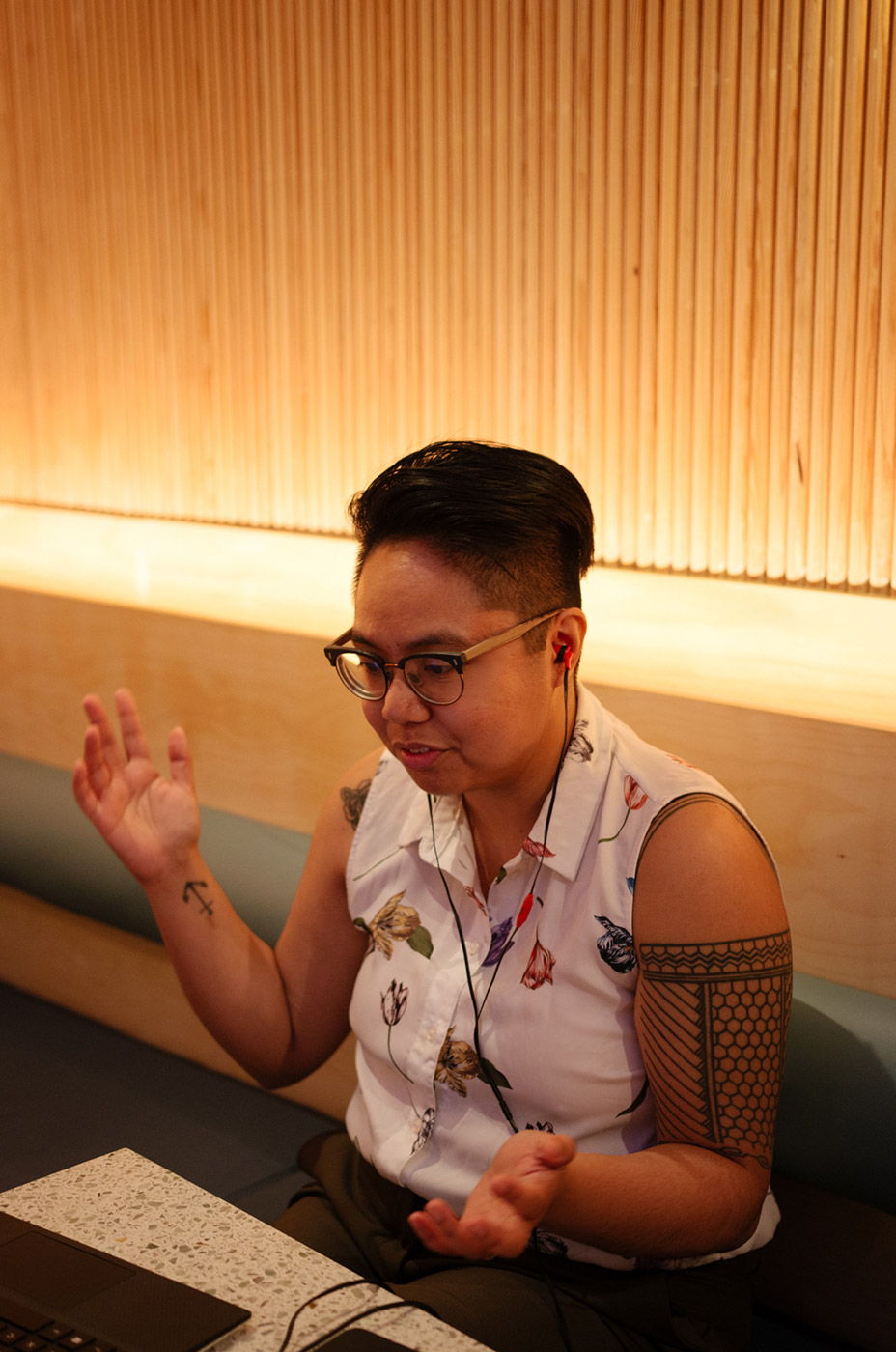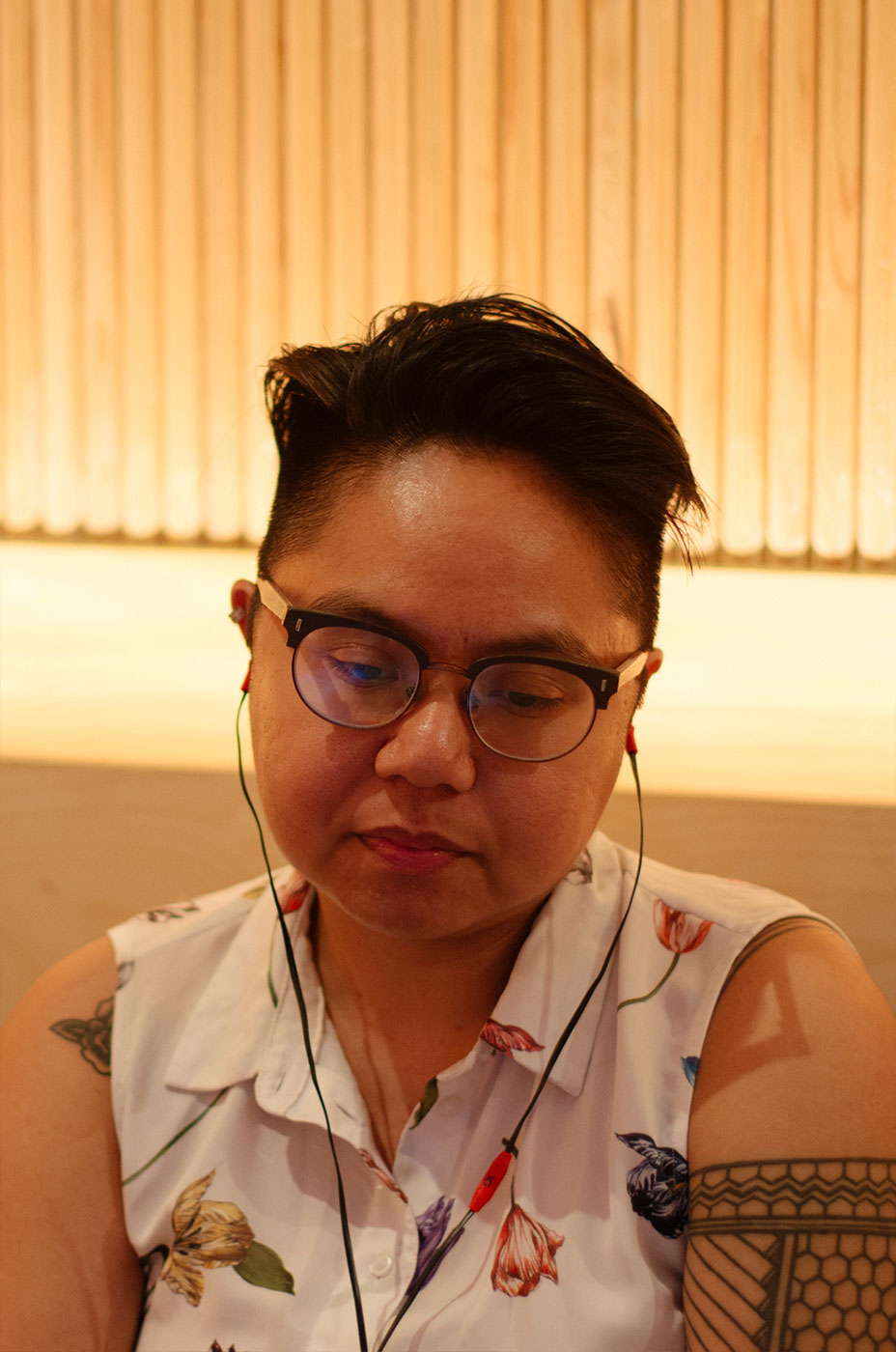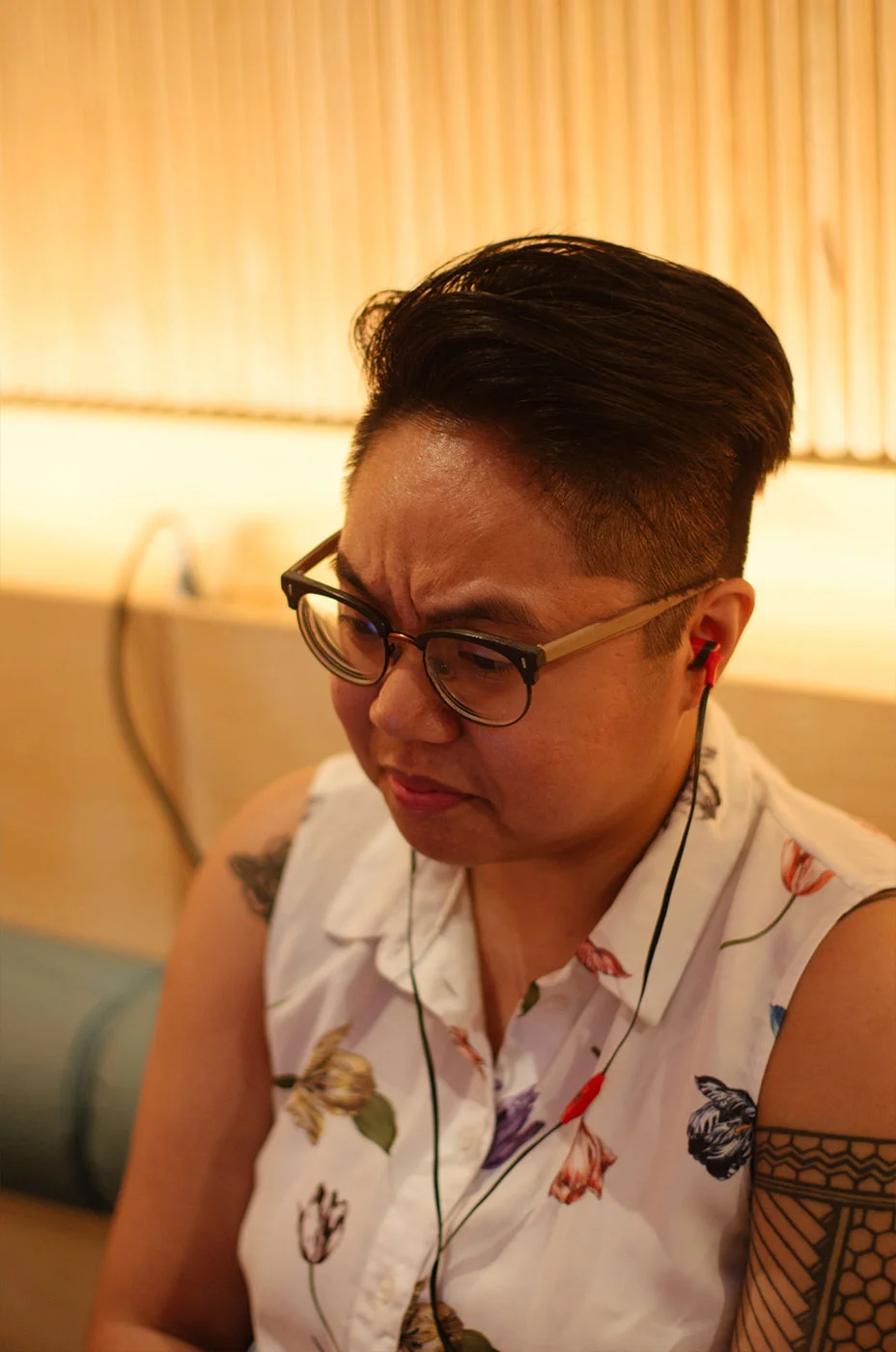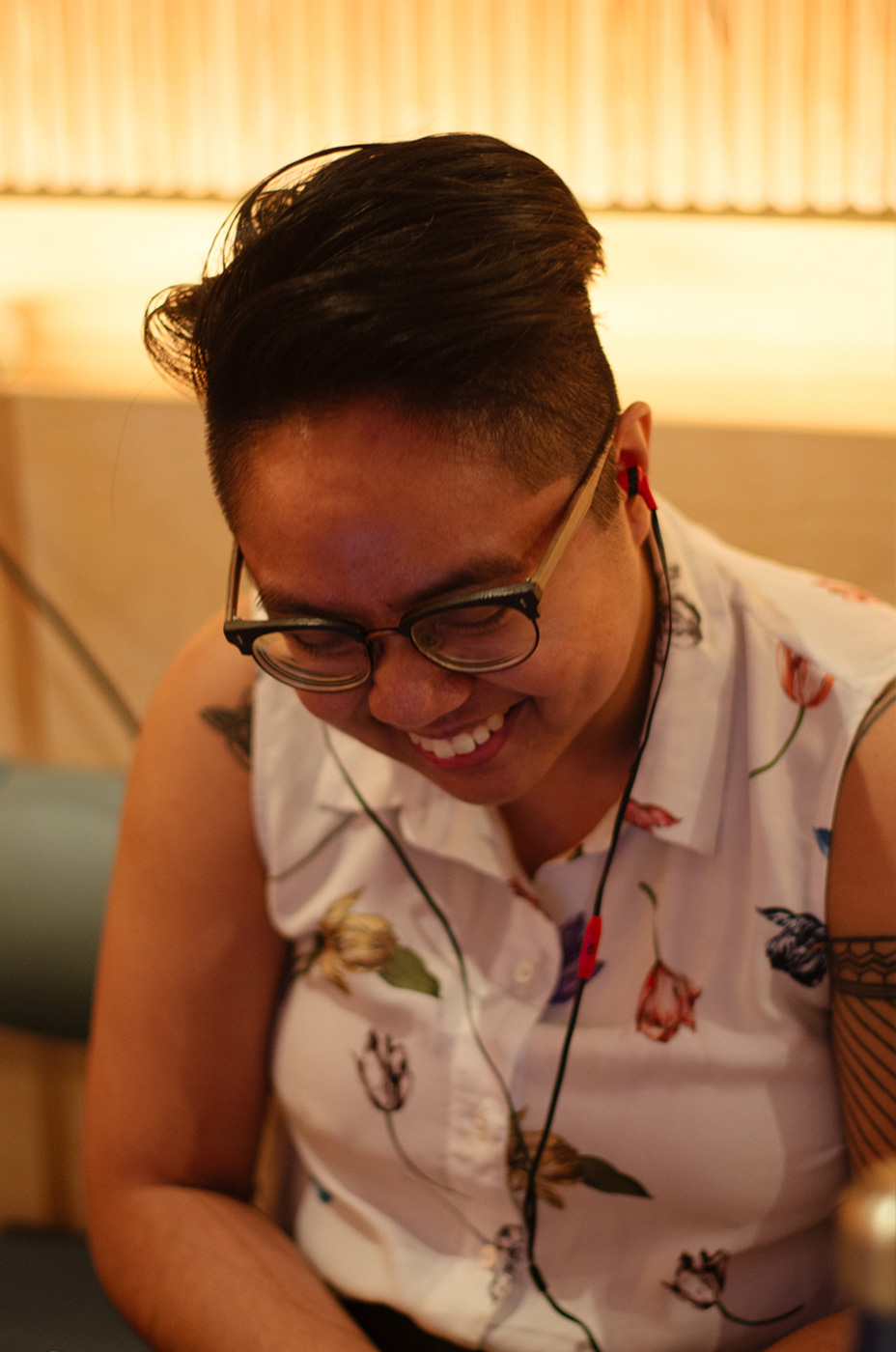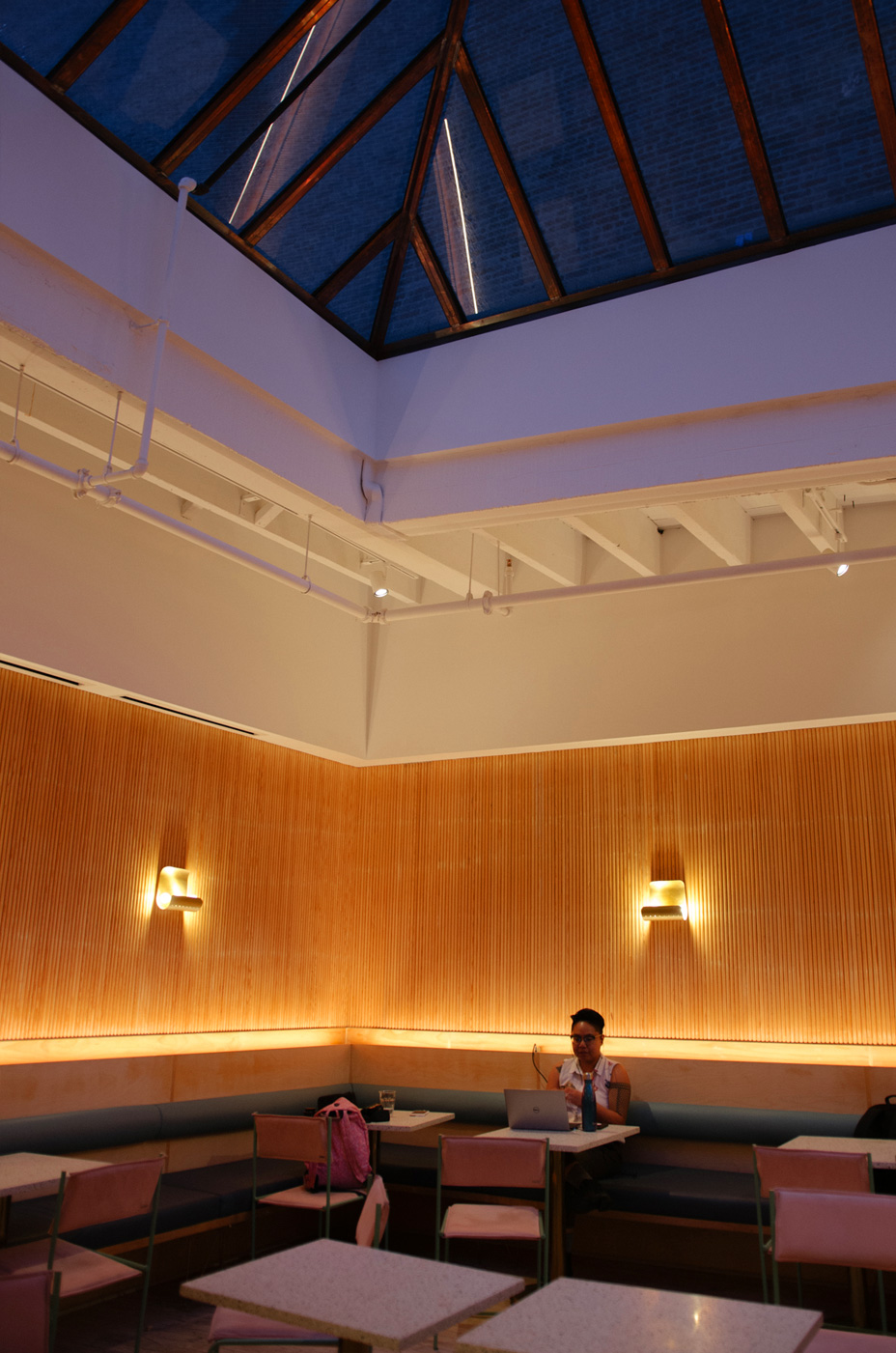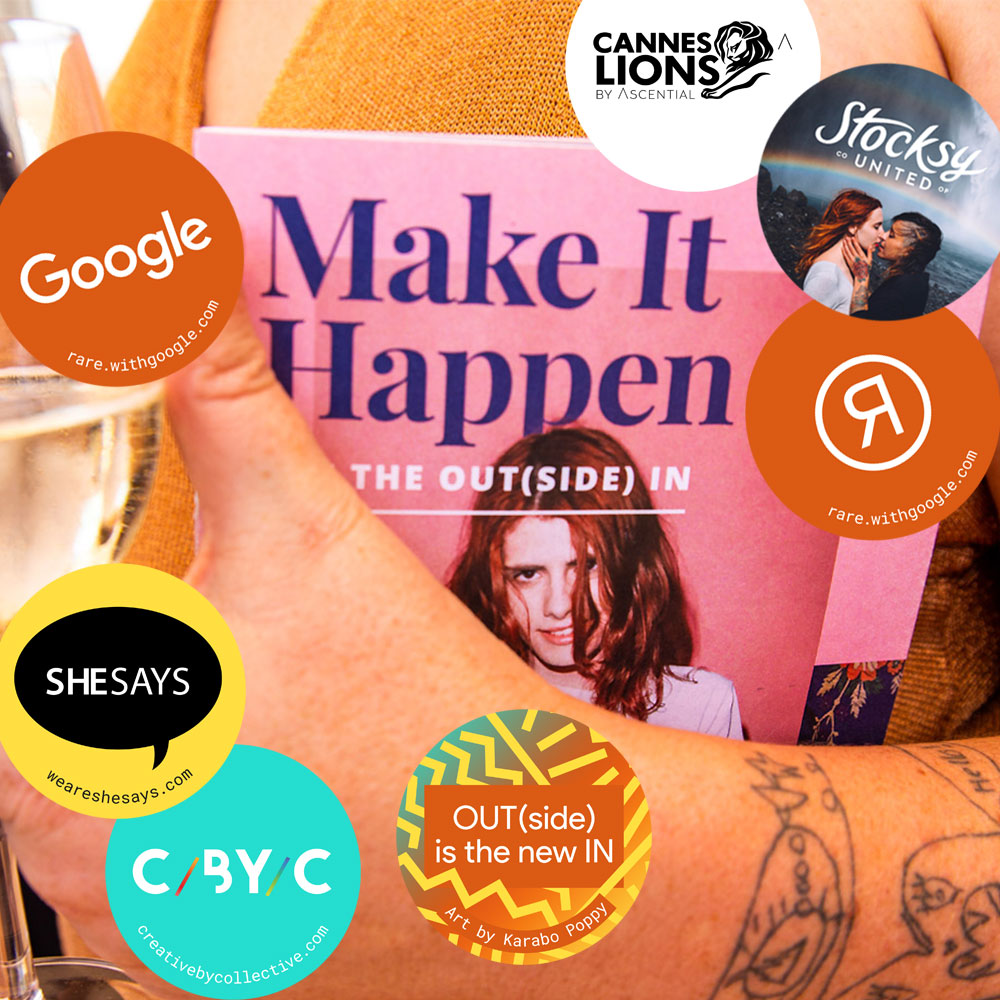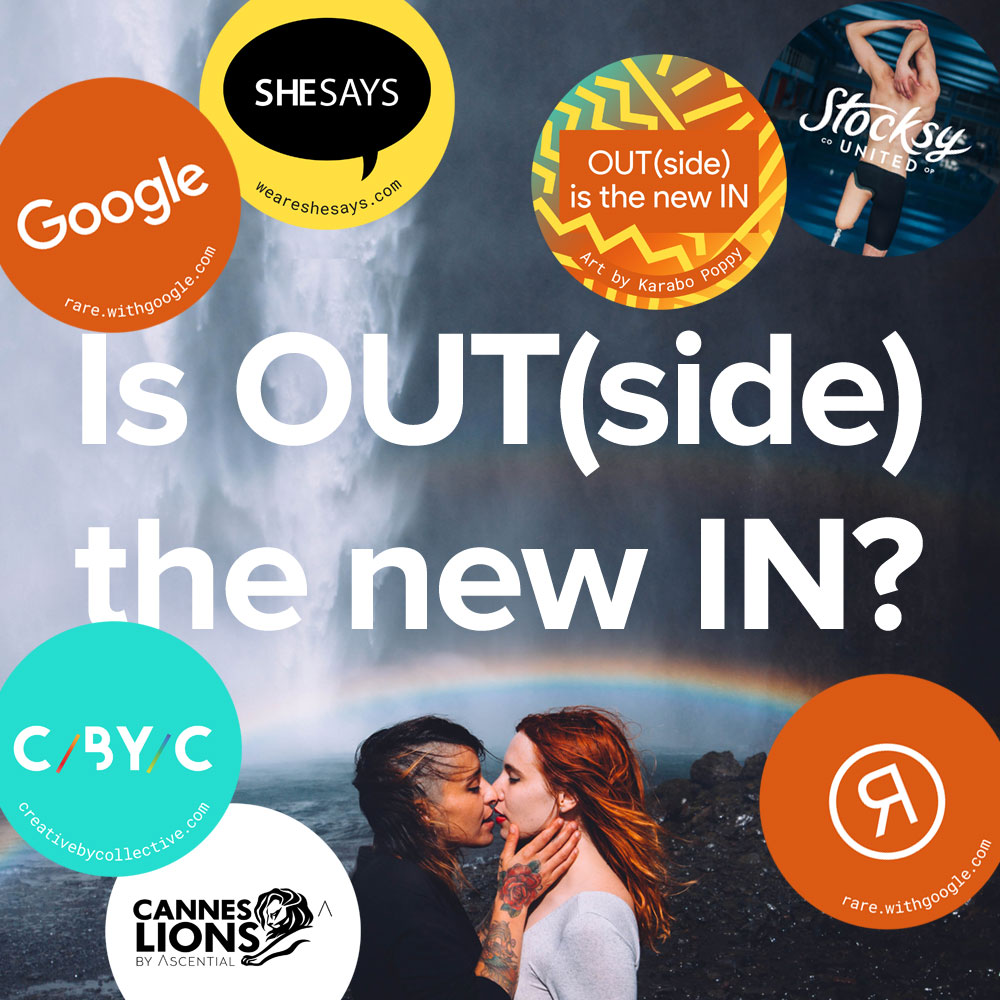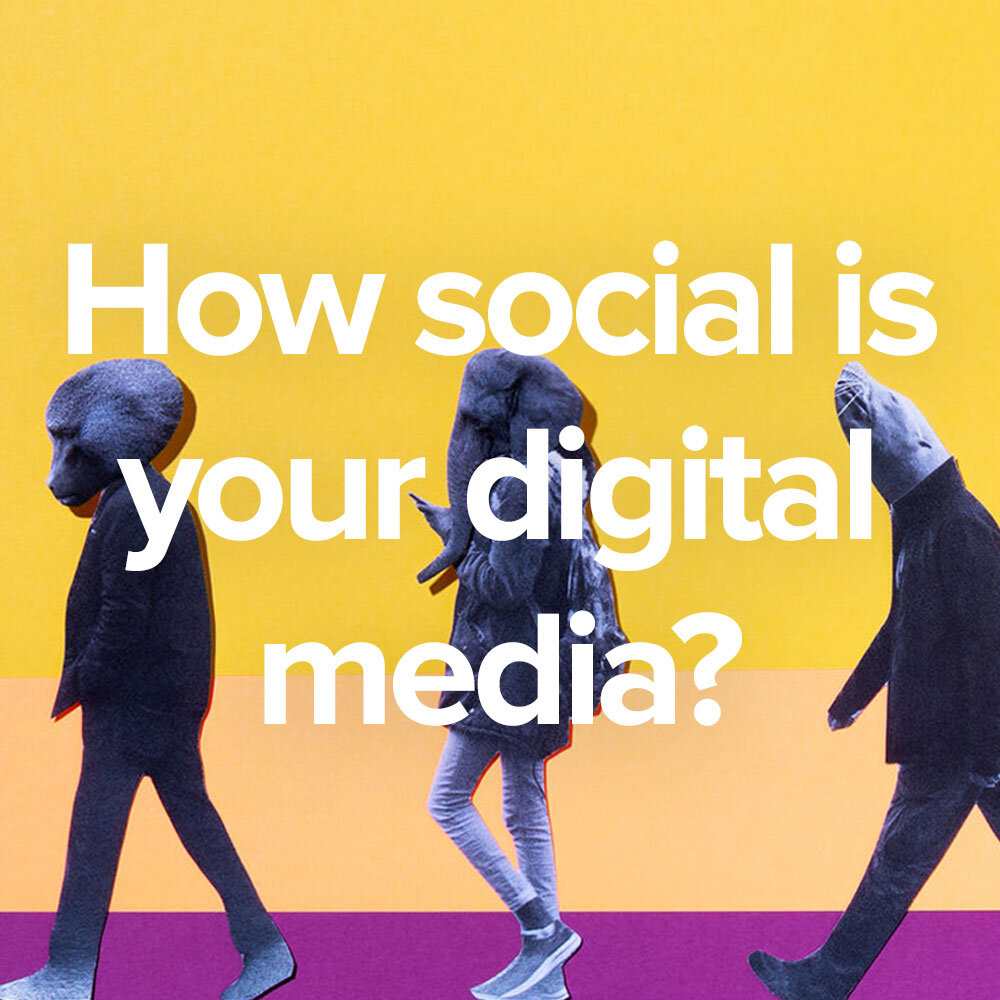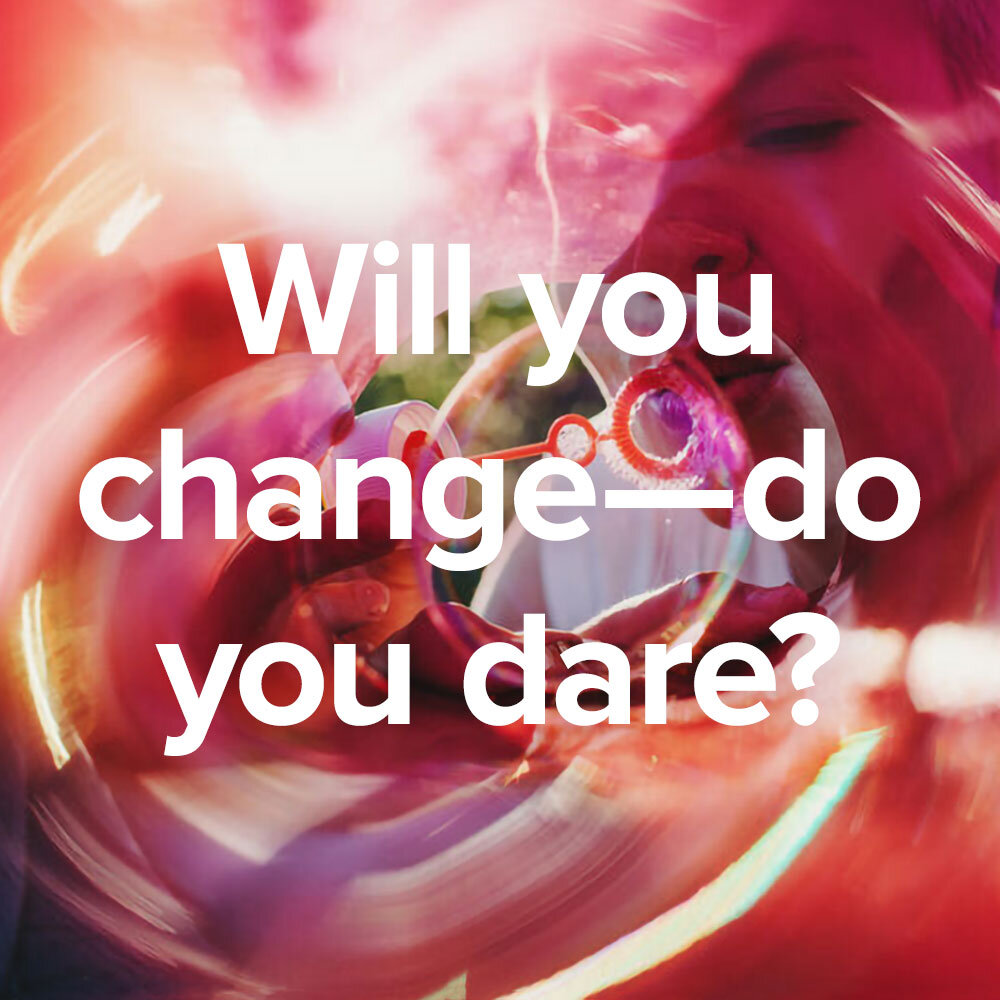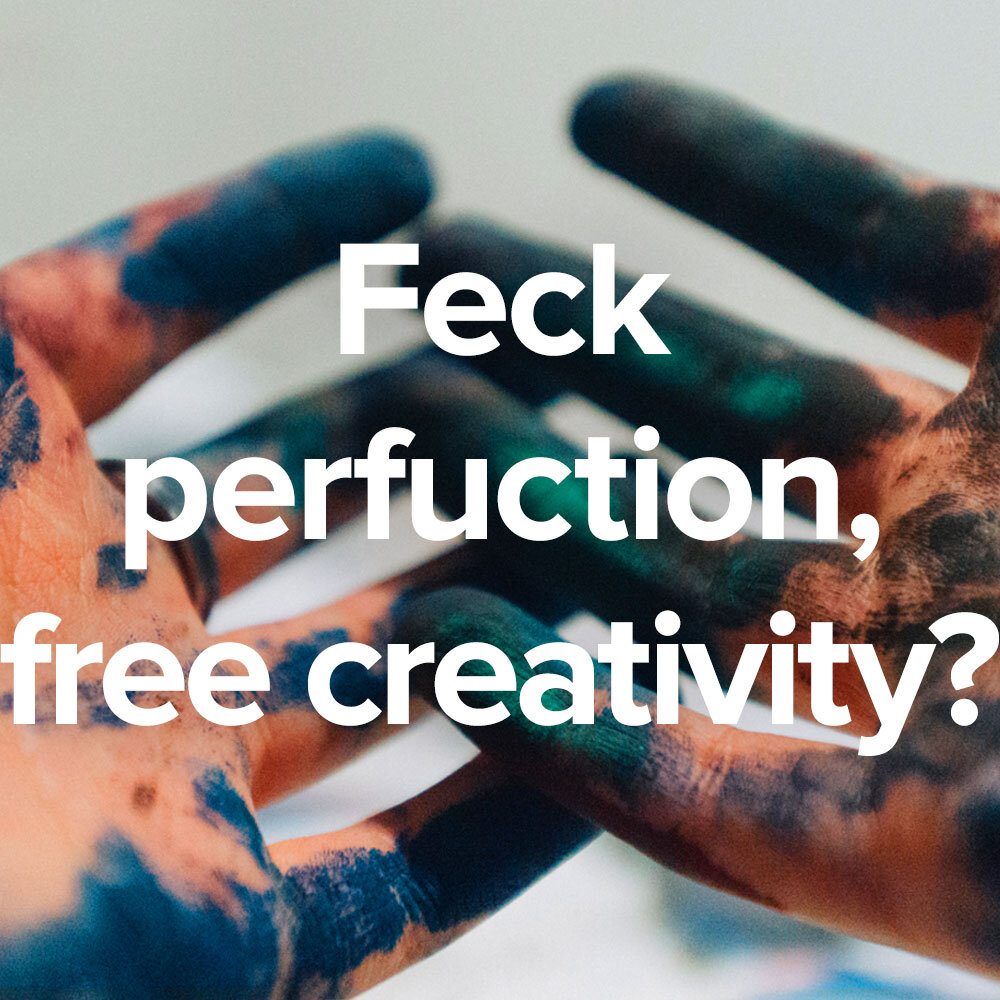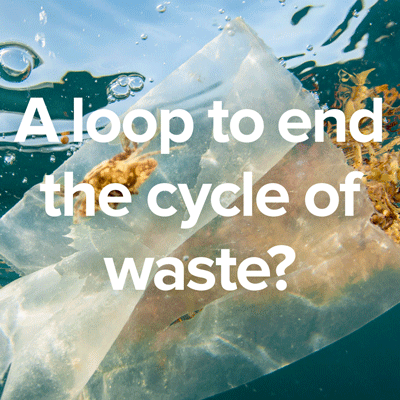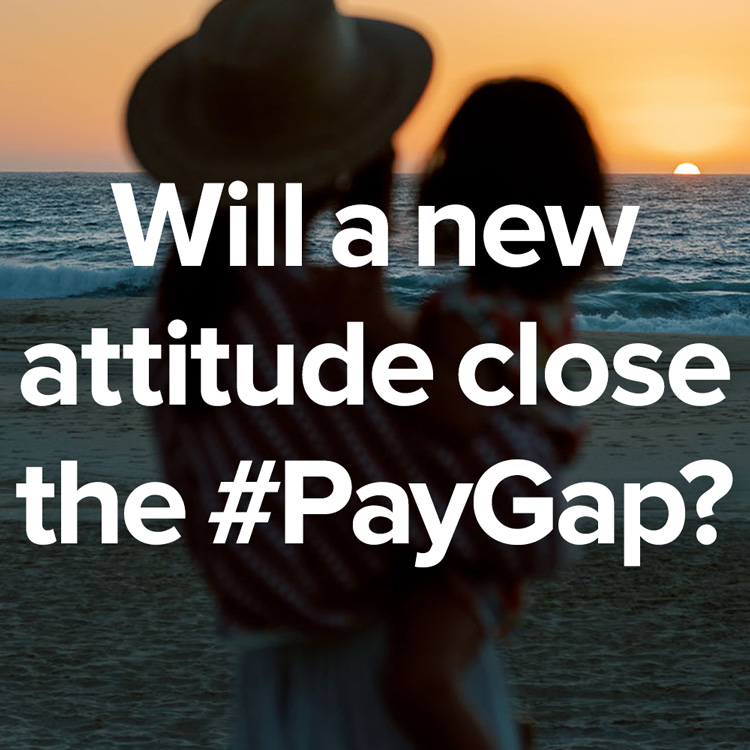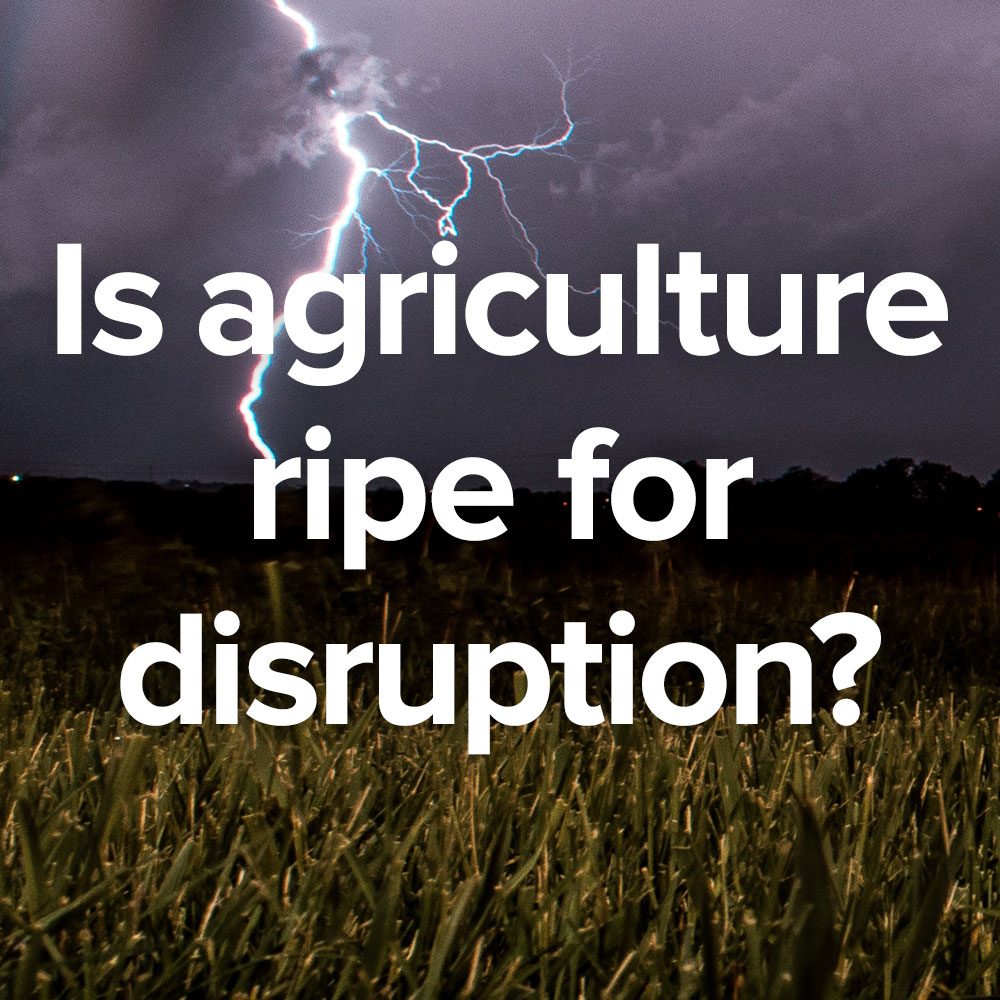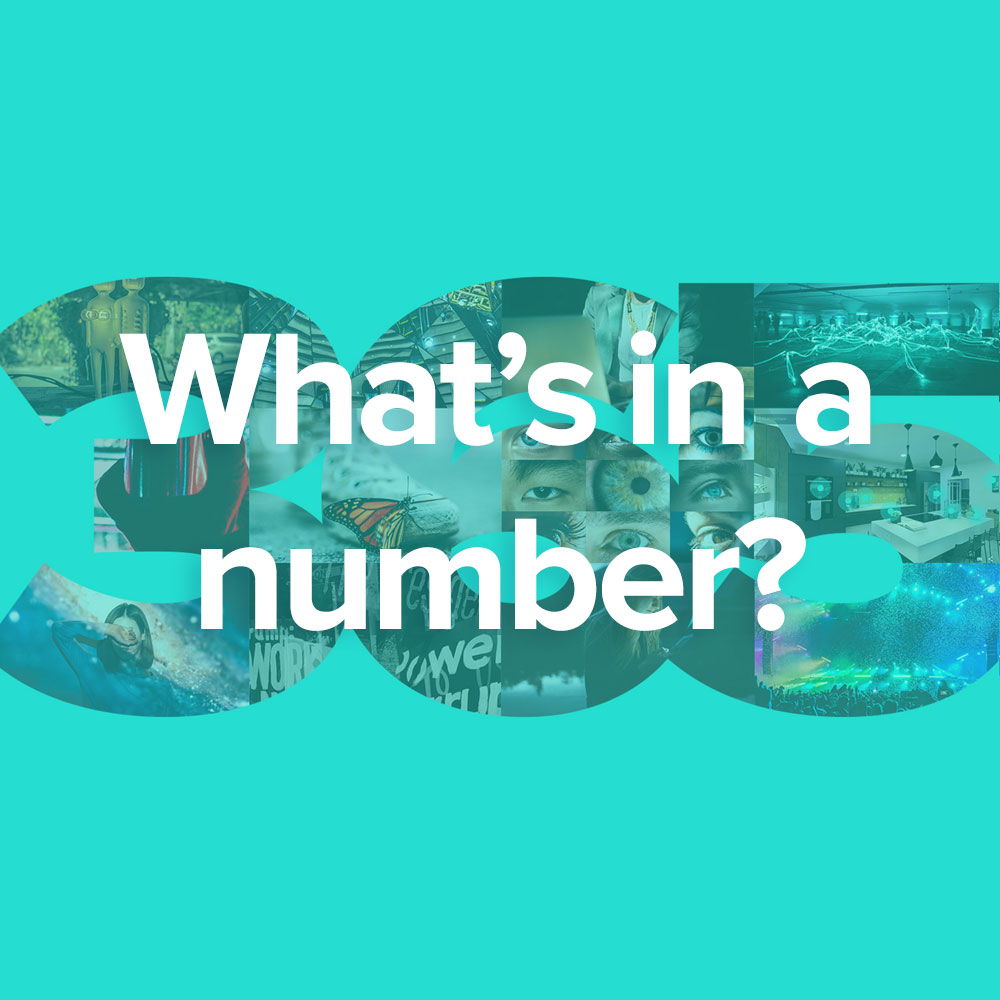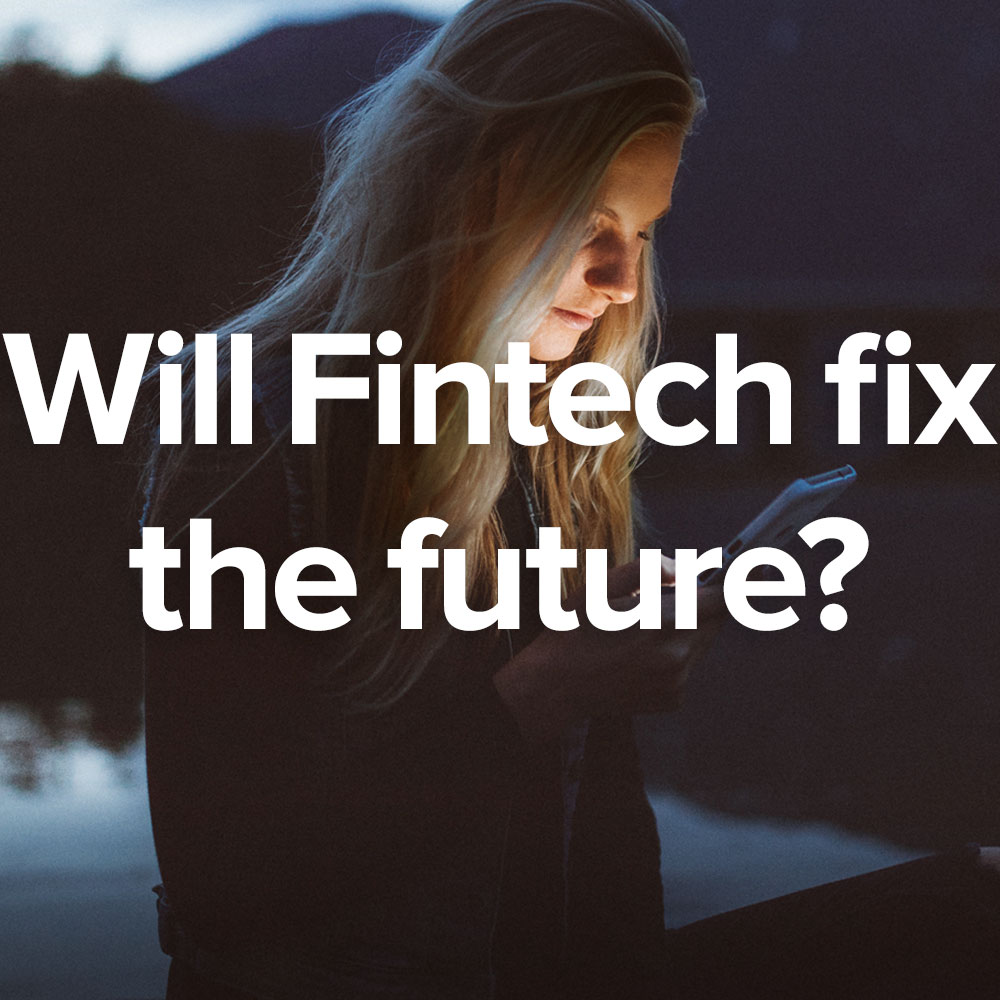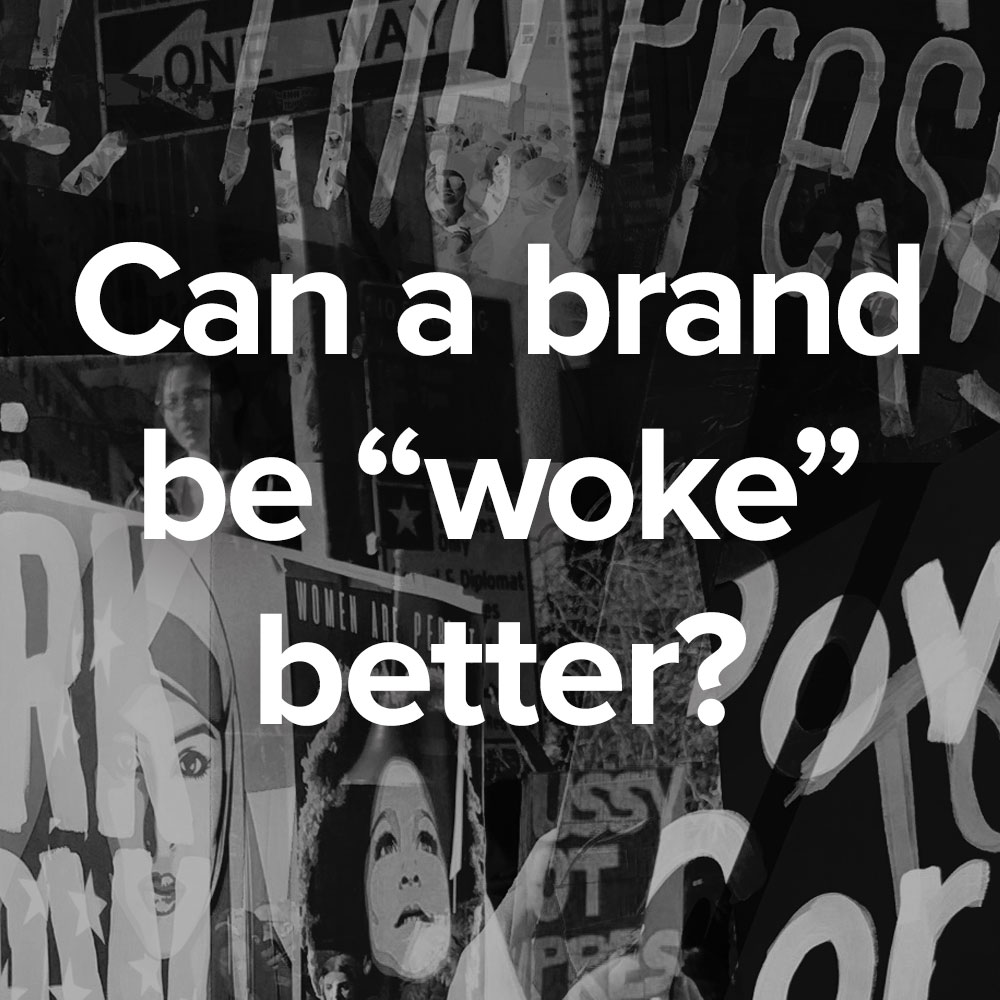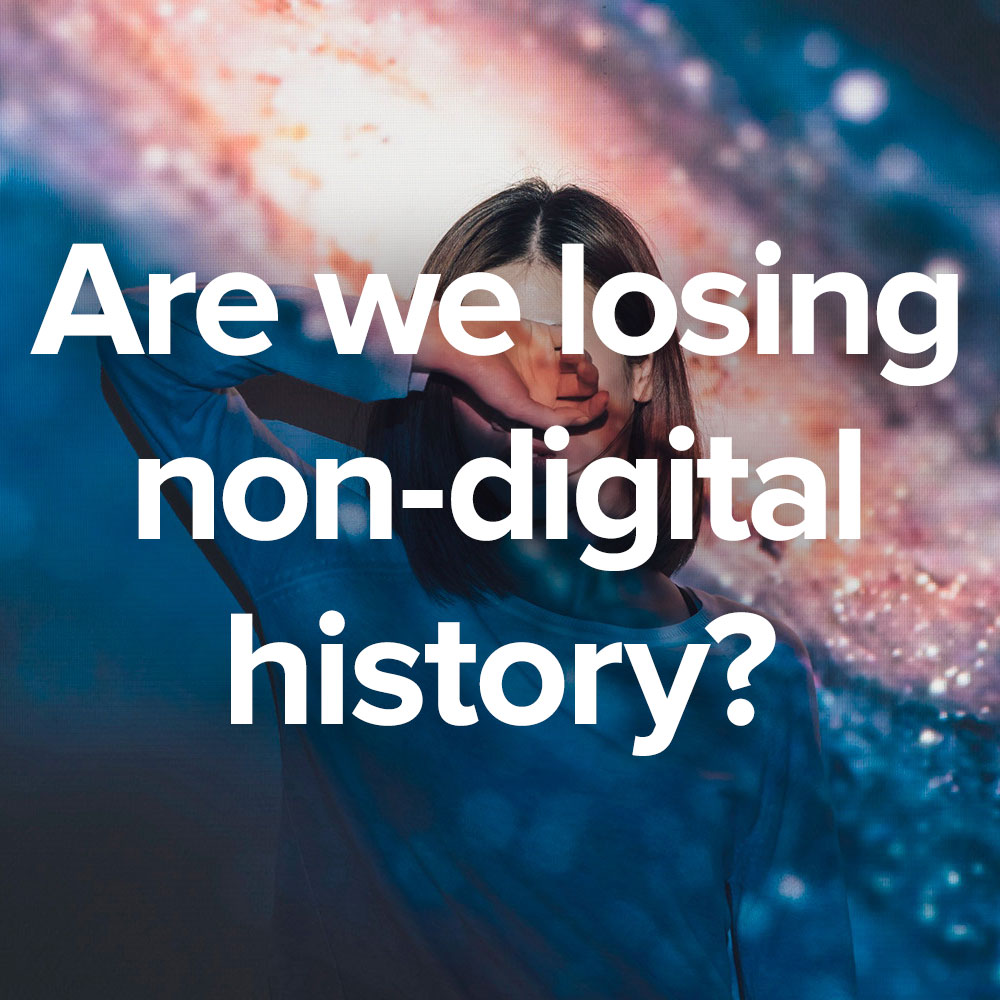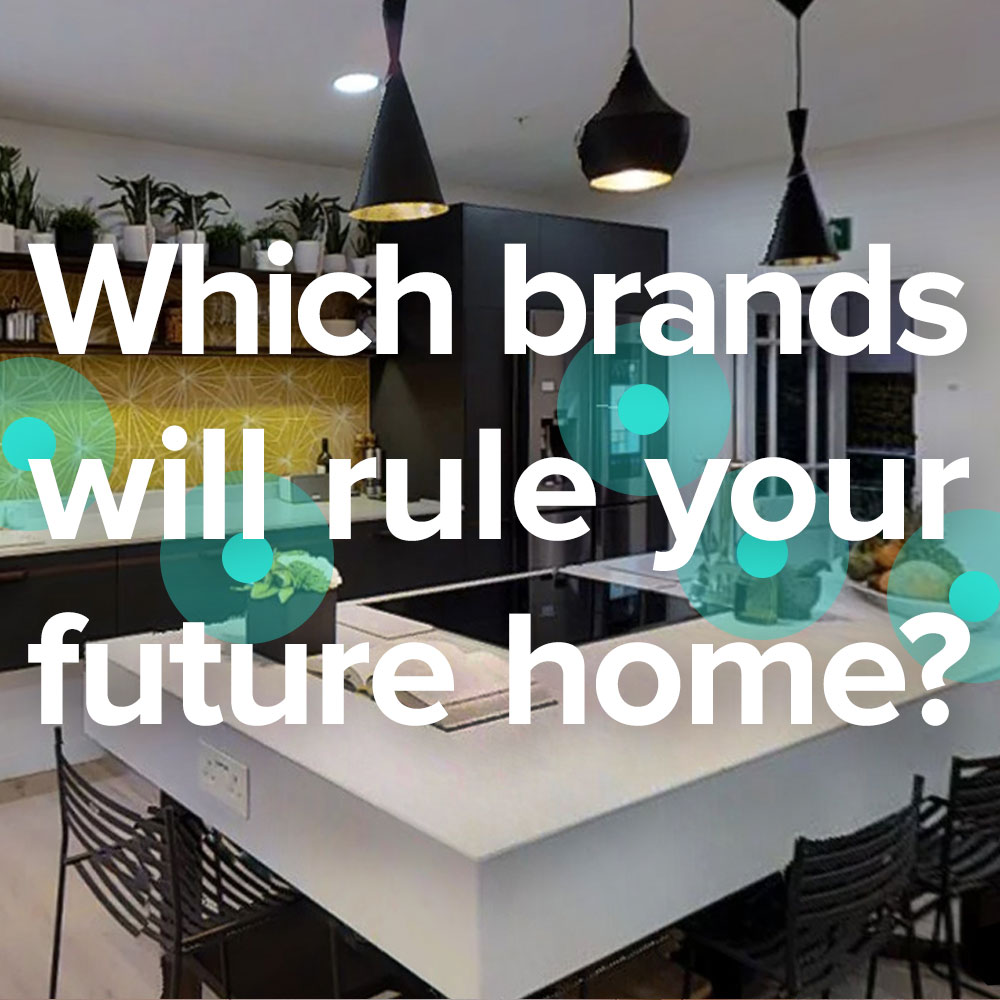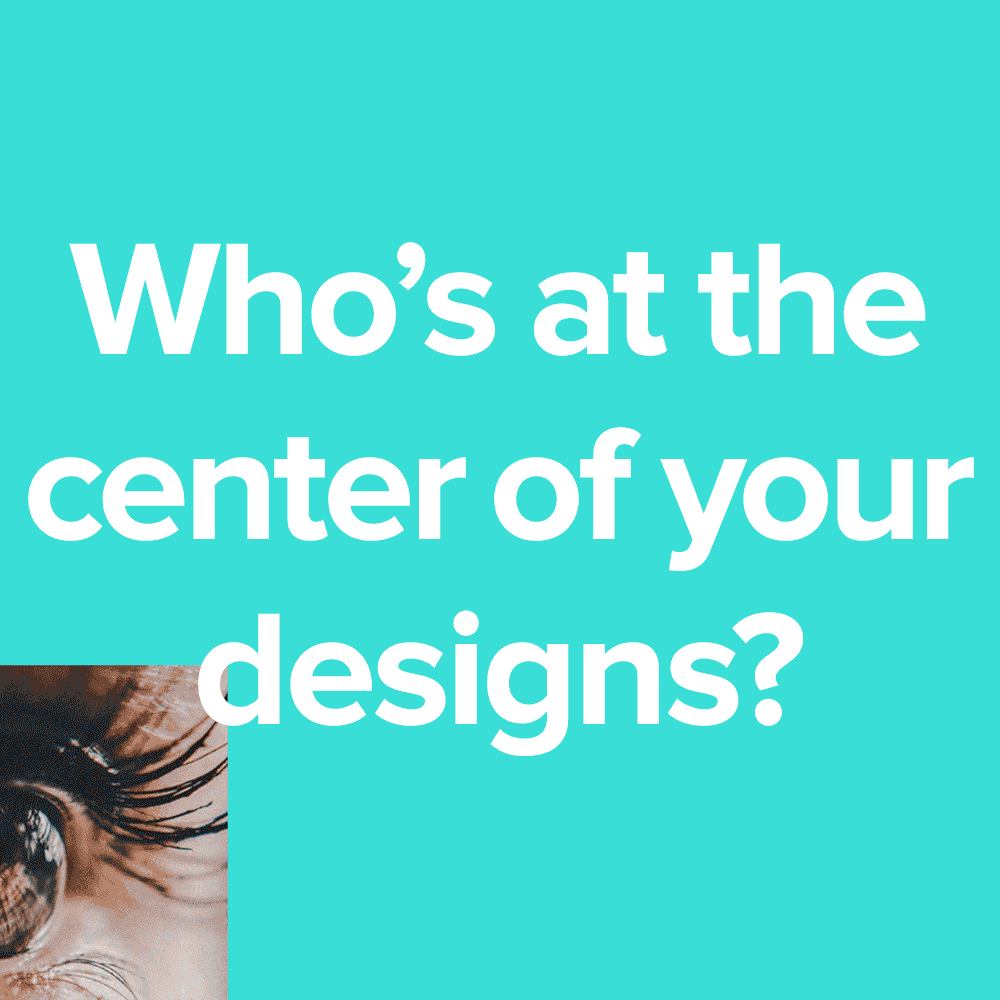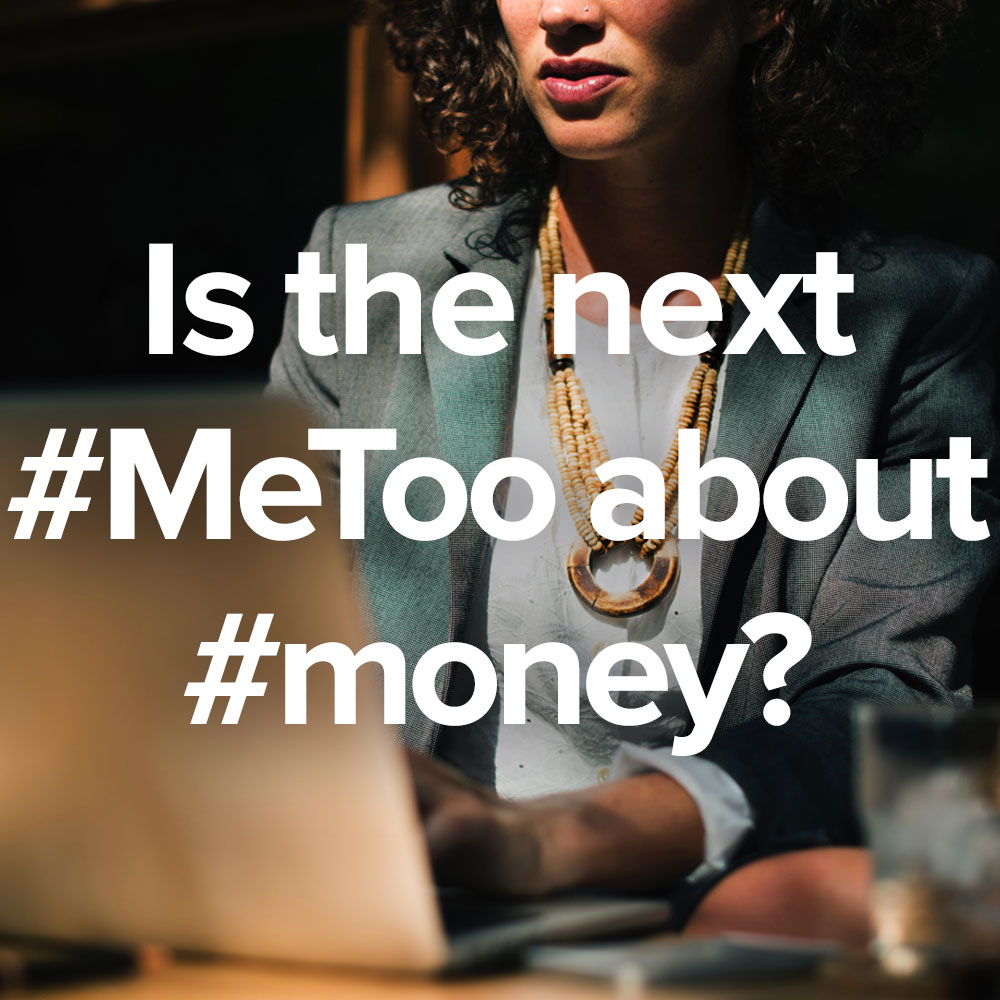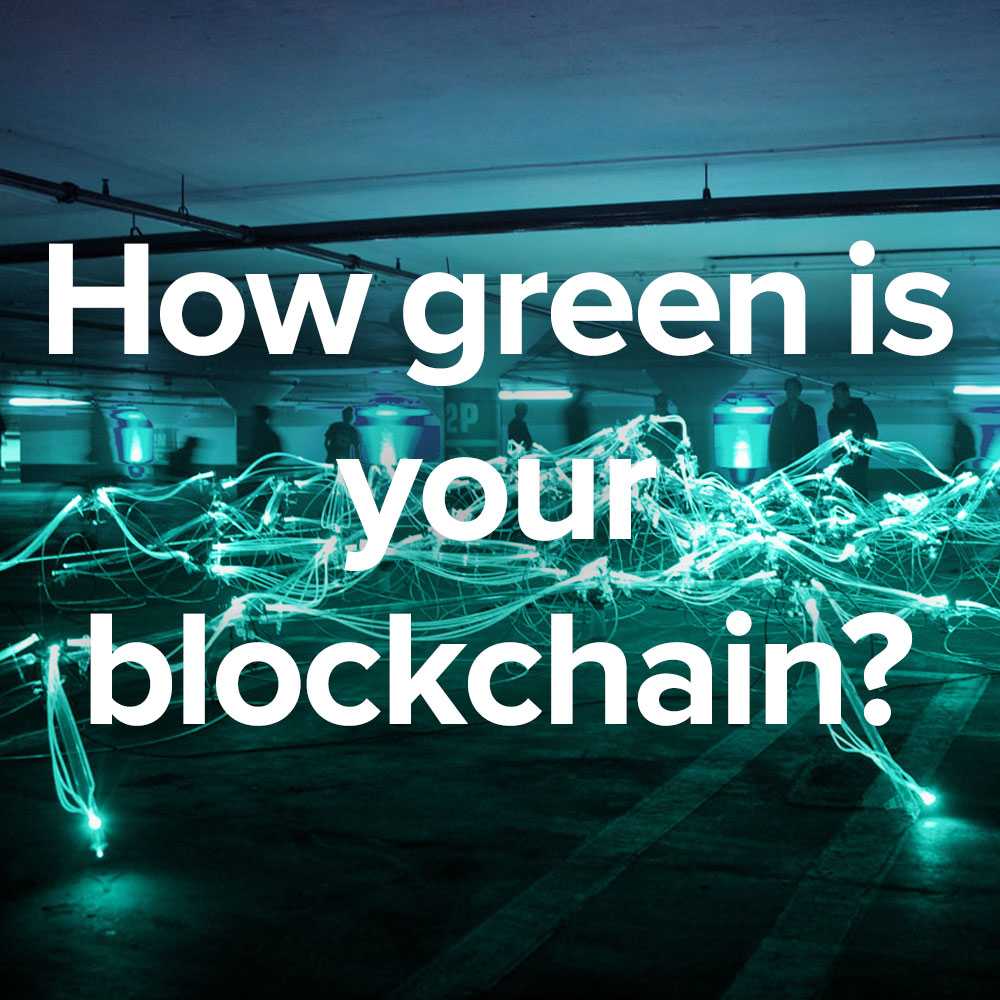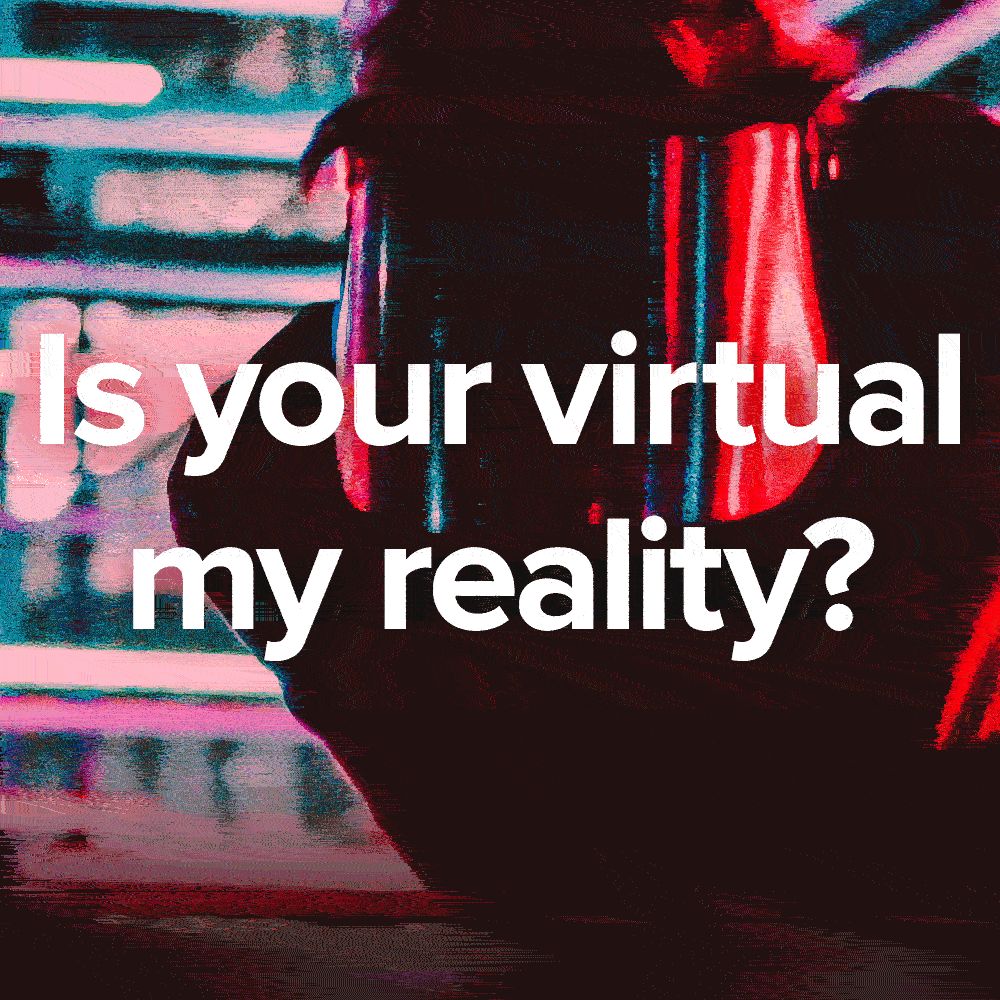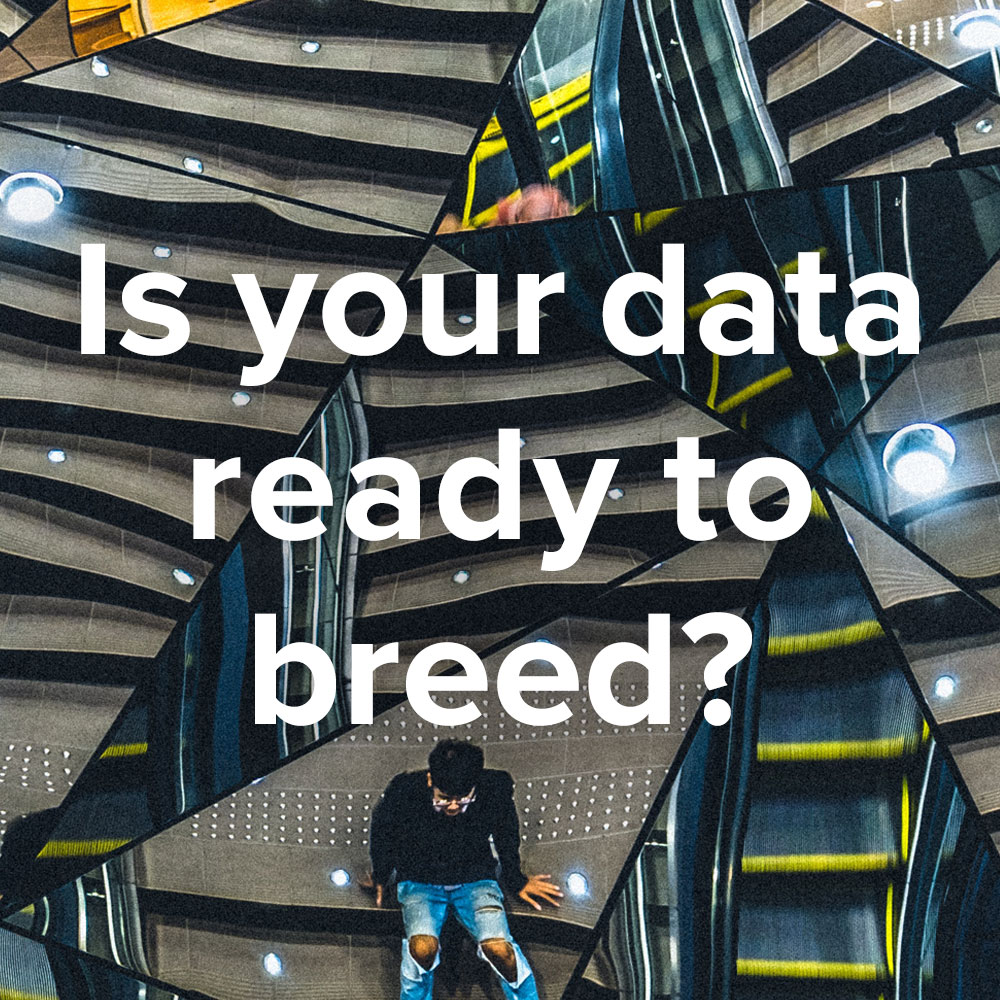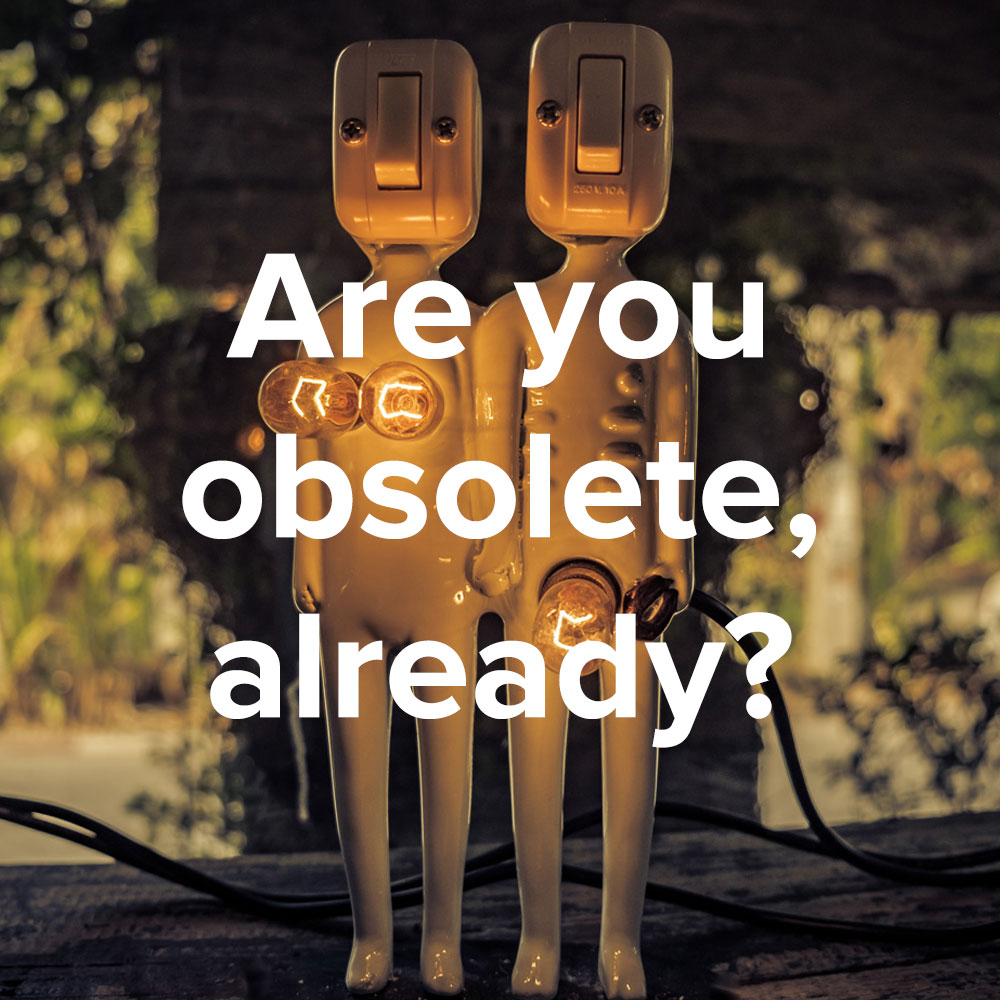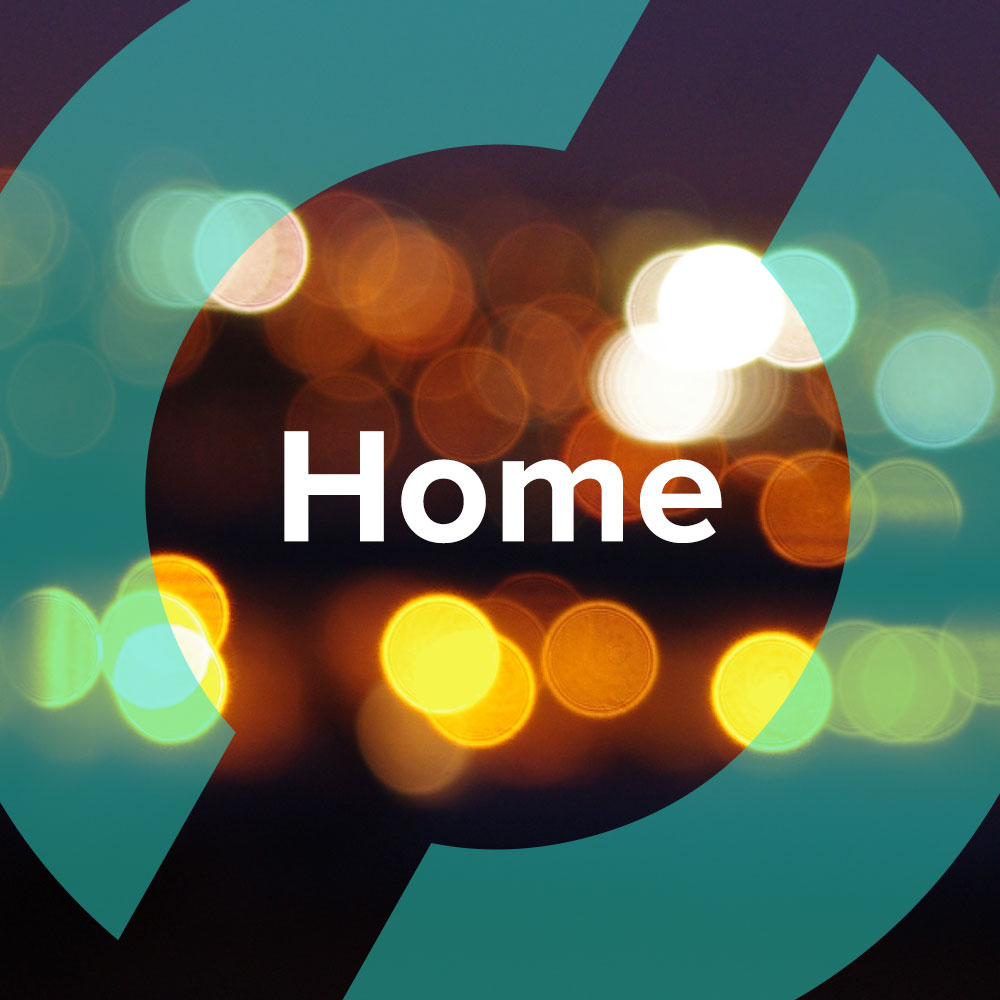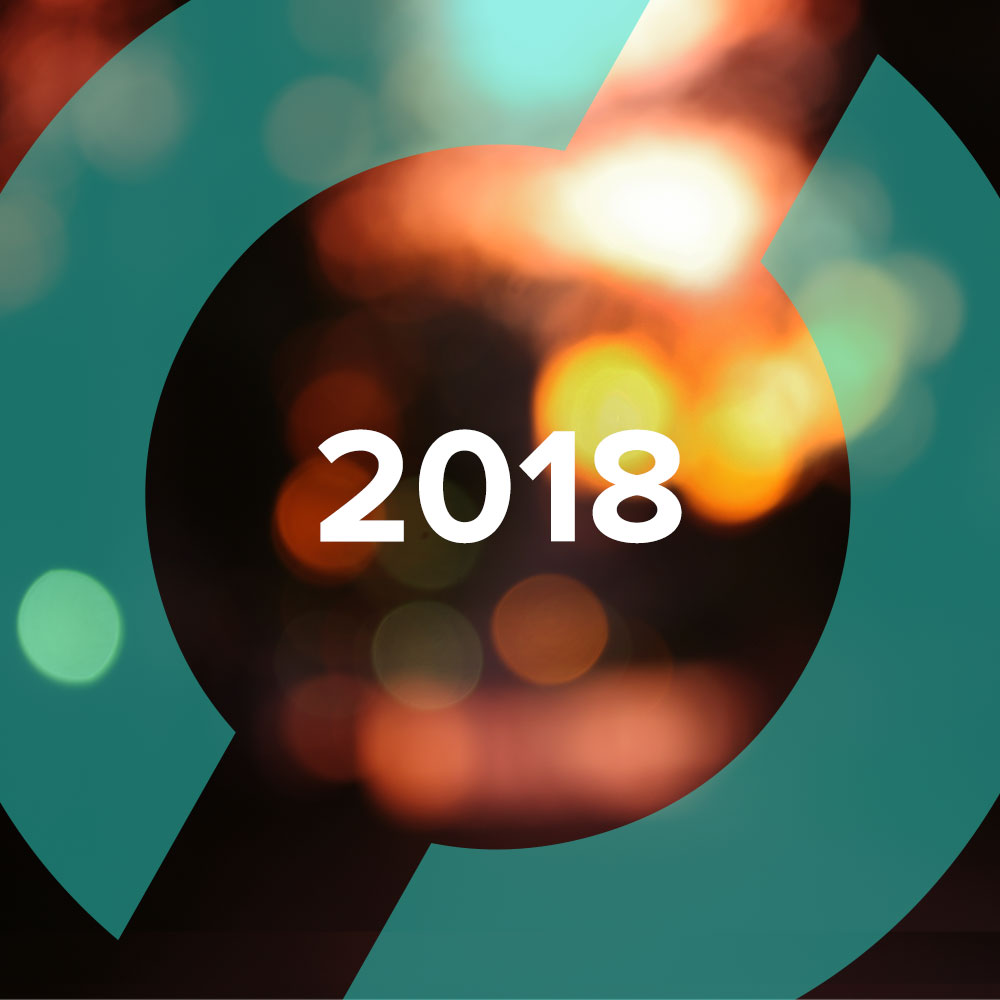“_________”
AC on Pride and Gender.
This year, in particular, I have seen more people being critical of brands leveraging Pride month and doing Pride campaigns, especially the ones who are giving so little back in terms of percentage of profits.
— AC Dumlao
Program Manager at the Transgender Legal Defense & Education Fund (TLDEF) | Activist / Educator / Artist
— Mrs. Isola was my second-grade teacher at P.S. 89 in Elmhurst, New York, borough of Queens. I have no real memories of her, just a class picture, which is pretty much the point: Whatever I was supposed to be learning in school at the age of seven, I was tuning it out. I blame only myself. What did I miss? I’m not exactly sure, but later on in childhood, I realized that although I could write perfectly well (see what I did there?), I was not necessarily on a first-name basis with all the parts of a sentence. And I’m not talking about advanced stuff, say, gerunds. I’m talking about some embarrassingly core concepts, for example, pronouns. None of us back then had any idea of the deeper meaning pronouns would someday convey. They were just words.
Pronouns are important to AC Dumlao, whose website is “callmethey.com.” AC, queer transgender and non-binary, is a rising star in the LGBTQ world. They are the program manager for the Transgender Legal Defense and Education Fund in New York, and heavily involved in the organization’s Name Change Project. In that role, AC has a front seat in what is sometimes the theatre of the absurd: brand marketing to the LGBTQ community, especially now, during Pride month. They’re encouraged, frustrated, but also optimistic. They’re paying attention—and so am I.
Gender fluidity is definitely having a moment, but it’s not the first time it’s had high visibility in America. In the 1990s, drag queen RuPaul was the face of MAC Cosmetics. Calvin Klein launched CK One, a gender-neutral fragrance line. But now Cover Girl is throwing out traditional gender norms by featuring social media star James Charles alongside pop singer Katy Perry. Global retailer ZARA is launching a genderless line. Luxury-goods maker Louis Vuitton's hiring Jayden Smith to model skirts. Is this wave different from the last one?
AC — I think that this current wave is informed in a much different way. The way that the general public and society thinks and talks about gender has advanced a lot, compared to, say, the RuPaul campaign. Time Magazine had a cover story in 2014 called “The Transgender Tipping Point” that kind of posited that trans civil rights would be the next big minority-group issue to be at the forefront.
The current wave or generation or whatever you want to call it, this moment, is really more hyper-aware about gender and gender presentation and about this binary of male and female. Millennials, and even younger than that, Gen Z, are really at the forefront of knowing a transgender person, a non-binary person, a person who is outside of this gender binary as we know it. For example, when you bring up James Charles, I think that’s really indicative. He is showing the world that boys can wear makeup and be who they are.
Is the media moment—the branding moment—resonating with transgender people? Is it resonating with other people?
I don’t know if I would necessarily say that the branding is resonating with transgender people but rather that cisgender people, people who do identify with the sex/gender they were assigned at birth… cisgender people are the majority, are now much more aware of transgender people and gender issues and, therefore, thinking about these issues a lot more. When it comes to brands, it would be ideal to believe that they’re thinking about the trans population but, at the end of the day, the adult trans population is estimated to be 0.6% of the U.S. population, around 1.4 million people, according to the Williams Institute. Probably a little more, because it's my assumption that a lot of people may not feel comfortable fully disclosing their gender. Regardless, transgender people are in the minority, but because these issues are at the forefront, and the general public is now more on board with the transgender rights movement and want to be allies, and all of that is who brands are appealing to. They are the people who are buying the products.
“Transgender people are in the minority, but because these issues are at the forefront, and the general public is now more on board with the transgender rights movement and want to be allies; all of that is who brands are appealing to. They are the people who are buying the products.”
Maybe I’m too skeptical, because I have my doubts, but does the attention brands are giving gender fluidity feel authentic to you? And if you think brands are being inauthentic, is it obvious? Is it just marketing?
This is a huge question right now, and you know, there is no ethical consumption under capitalism. For any for-profit company to exist, they must marketing products to make money. There will be differing levels of authenticity or inauthenticity because money is involved. This is a big thing being discussed right now, particularly because it’s June 2019, the 50th anniversary of the Stonewall Uprising: the birth of the modern LGBTQ+ rights movement as we know it. This year there’s been, more so than I’ve ever seen, is something called ‘rainbow capitalism,’ basically, brands adding rainbows to everything. There’s varying degrees of what's behind the rainbow.
Oh, you mean, sort of like the winter holiday displays in Manhattan department-store windows, only it’s springtime?
Literally, I work off of 5th Avenue here, and all of the stores just changed all of their storefront windows to be rainbow something. They’ll make a Pride Collection with T-shirts or other apparel, and then some percentage of these T-shirts will go back to a LGBTQ+ non-profit or organization. What’s interesting is seeing the two sides of it.
Two sides?
Right. On one side, this year, I’m actually seeing a lot of transgender and non-binary people pushing the bounds of gender being in these advertisements. I’m particularly thinking of the H&M Stay True, Stay You campaign, which stars Laverne Cox, a black trans woman and activist from the show “Orange Is the New Black,” and she’s in that campaign. This black trans woman is the face a national H&M campaign. It's amazing.
On the other side, people are really looking to see how much these brands are actually giving back. To stay on the H&M brand, they’re giving proceeds from their sales to the United Nations Free & Equal Campaign, but only 10%. There are other brands who are doing up to a cap, like Reebok donation a portion of their proceeds of their Pride Campaign up to up to $50,000. Then there are brings giving 100% of their proceeds on certain items, like Ralph Lauren’s Pride month capsule collection’s t-shirt…
Which comes across as confusing, in the end?
On the surface, all the rainbows look the same, but behind those rainbows, there are different levels of actual charity going on, and it can be difficult to navigate ... Im observing people digging into which brands are worth purchasing from. Whether these brands are putting rainbows on their apparel just because they want to make money off of LGBTQ+ people and, furthermore, to capitalize on this moment we’re in where there is the most support for trans and non-binary people in the U.S. than ever before.
As someone who is both a non-binary gender and a first-generation Filipino-American, where do you stand on all this, then?
I’m finding it hard to figure out where I stand because I’m becoming someone who is a, I hate the word “influencer,” but I do have brands reaching out to me. I’m not Laverne Cox, but I have been asked to do sponsorships on Instagram. In my head, it’s a push and pull: Would it be authentic for me to advertise shoes for this brand? If my goal is to increase awareness of expansive genders, doing sponsorships does increase visibility for people like me: a transgender, non-binary person who uses the pronouns “they” and “them.” On top of that, I’m a 5 foot 2, petite, “average” sized, Filipino person of color. I have brown skin, a round face, and a wide nose. I’m nothing like a stereotypical model, who is usually androgynous, white, European featured, skinny, and 7 feet tall. I want the world to know that there is no one way to “look transgender” or “look non-binary.”
I’m constantly thinking about visibility and awareness and, kind of, the actual authenticity of where it falls. I’m going to see where it goes.
So, are you doing any of the Instagram advertising?
Yes. I am doing a few this month. I’m doing one for TomboyX. TomboyX is an underwear brand, a queer-owned underwear brand that has a special collection that has a rainbow band on their bras and tops and underwear. With that, choosing to say “yes” to that and to do that, is because it is an LGBTQ+-owned brand. They are a brand that advertises specifically to the queer and trans community all year round, not only during Pride month in June. That is something that they have that a lot of other huge corporations don’t have, that authenticity of ownership.
Sponsorships are very new to me. I’m becoming a lot more visible in a way that I’m kind of navigating what my responsibility is to my followers and my fans of what authentic means for me. “Authentic” is a word I think about a lot. Yes, I did say yes to that specific brand.
Sounds like you’re in a tough position. Everything you do you have to think through.
Yes.
And anticipate wider reactions.
Yeah. I have my Bachelor’s degree in drama, and I focused on theater directing. I think my brain is always thinking about the optics: what I’m doing, where I am in the world. I’m particularly aware of my social-media presence and what my “brand” is, what my voice is. I feel compelled to create content constantly and make sure that I sound authentic. Which is at odds because I'm being very, I don't want to say calculated, but I'm very thoughtful about everything that I put online.
Cause it’s forever.
I know that everything will always exist once it’s on the World Wide Web. Even if I delete a Tweet, it still lives somewhere in the Internet. I think about all these things very much, to the dismay of my partner, I should add, who thinks I overthink too many things and should say yes to more brand deals. We can butt heads about that, but I think my approach has been successful so far, in that I still feel good about who I am being on the Internet and in real life. Beyond that, my biggest goal is to increase visibility and awareness for transgender and non-binary people and to, it sounds very cliché, but to change hearts and minds, and to use that experience to help people feel comfortable with being themselves.
Marsha P. Johnson and Sylvia Rivera of the Street Transvestite Action Revolutionaries (S.T.A.R) at the Christopher Street Liberation Day, Gay Pride Parade, NYC (24 June 1973). Photographer Leonard Fink
“This year, to date, nine transgender women have been murdered in the US. We’re celebrating the 50th anniversary of Stonewall, at which two of its leaders, Sylvia Rivera and Marsha P. Johnson, were trans women of color. Taking this all into account and thinking about the most vulnerable in our communities, there is a real need for people to show their allyship, beyond just throwing a rainbow on something.”
What kind of broad reaction among the people you work with and so on, are you seeing to these rainbow brand campaigns?
I think the reaction has been pretty critical, but I also run in a very progressive, left-leaning circle. I don’t know what I could say for the everyday LGBTQ+ person. There is a heightened awareness, I think, because also we’re living in such a critical time in the U.S. This year, to date, nine transgender women have been murdered in our country. Most recently, one was reported on June 6th. We’re celebrating the 50th anniversary of Stonewall, at which two of its leaders, Sylvia Rivera and Marsha P. Johnson, were trans women of color. Taking this all into account and thinking about those who are most vulnerable in our communities, there is that real need for people to show their allyship, beyond just throwing a rainbow on something.
Do you expect all these rainbows to be gone when Pride month ends?
That is a big rallying cry across people who are calling out this kind of rainbow capitalism of, “Oh, you just show up for June and then you leave,” and you see all of the rainbows come down. I think that this year, in particular, I have seen more people being critical of brands leveraging Pride month and doing Pride campaigns, especially the ones who are giving so little back in terms of percentage of profits. There are brands that make rainbow stuff and have no mention of giving back to any kind of charity.
“Brands throw a rainbow on a product and put the word ‘love’ in it and think that makes it LGBTQ+ themed, but I think that that is kind of more for the masses, and within my communities, we’re looking at that and rolling our eyes because it’s so vague.”
Authenticity issues aside, though, I would think there are benefits from the increased brand presence?
Yes. I think that people are really going to be so further aware of all these issues, even people who aren’t necessarily plugged into the LGBTQ+ community. Generally, this June 2019, just more than ever, I’ve been seeing brands come out and interpret their way of being supportive or reacting to this moment.
Are you hearing, reading, feeling, brand affinity among the transgender community toward these brands? Are you seeing social media people talking to each other about them? Are you hearing people wherever you hang out, in your office or wherever, commenting?
In the groups I run in, we’ve spent a lot of time making fun of all of the, honestly, sometimes ugly rainbow stuff. When I see something that’s truly egregious and the graphic design is terrible, I take a picture of it, and I send it to a group chat of my queer and trans friends and I'm like, "Look at this silly thing."
Brands throw a rainbow on a product and put the word “love” in it and think that makes it LGBTQ+ themed, but I think that that is kind of more for the masses, and within my communities, we’re looking at that and rolling our eyes because it’s so vague.
You’re looking for more specificity from them.
I think what we’re looking for is specificity that relates to authenticity, to see a shirt or something that has a trans flag on it or is a trans-specific item or is relating to someone's pronouns or something like that. But that's not what’s being made right now by these corporations. Corporations are still kind of appealing to the wider LGBTQ+ umbrella and rainbow.
Nature abhors a vacuum, of course.
Well, that’s where independent creators come in, selling their own merchandise. People making the clothes that they want to see, with the phrases they want. I, myself, I make stickers for non-binary and transgender folks because I don’t know if we're ever going to see a big corporation making specifically transgender-focused phrased clothing. Who knows? Maybe they will. Maybe it will be the next hot thing.
My feeling is that it’s tough for people to market successfully to people not like them. Not exactly a moral argument for diversity in companies, but an argument for it nonetheless. So, let me ask this in that context: Are brands hiring people from your community? Could they be doing more in that regard? Would it help them relate (and sell their products) if they did?
Yes, absolutely. All of these brands should be hiring transgender people to be on their teams. It’s exactly what you’re saying. To really understand how to market to a certain group without that group having a voice, there’s always going to be something missing.
And as my friend who’s a teacher puts it, it’s not necessarily only about branding. It’s kind of like when you’re in your kitchen pantry, and you're looking through your cabinets not being able to find something. When you have the actual person from the minority group there, when you bring the transgender person onto your team, it’s not that they help you find the thing that's missing, but more that they say, “Oh, have you seen this cabinet over here that you never even knew was there?” There’s always going to be that missing piece if the minority group that's being appealed to isn’t part of the conversation.
What’s difficult is that this is coupled with so many things. The fact that transgender people compared to cisgender people have many fewer opportunities, don’t have the same kind of access in job-seeking.
Hiring trans people is one thing. Overall, and this is such a big ask, the whole culture needs to shift in its acceptance and understanding of trans communities, so all transgender people feel good and safe being out in the workplace. We’ll pass the transgender tipping point when, beyond work, each trans person is respected and lives free from discrimination.
Thank you for sharing your insights into gender and the LGBTQ community. We promise to be more aware. Happy Pride 365 days a year!





